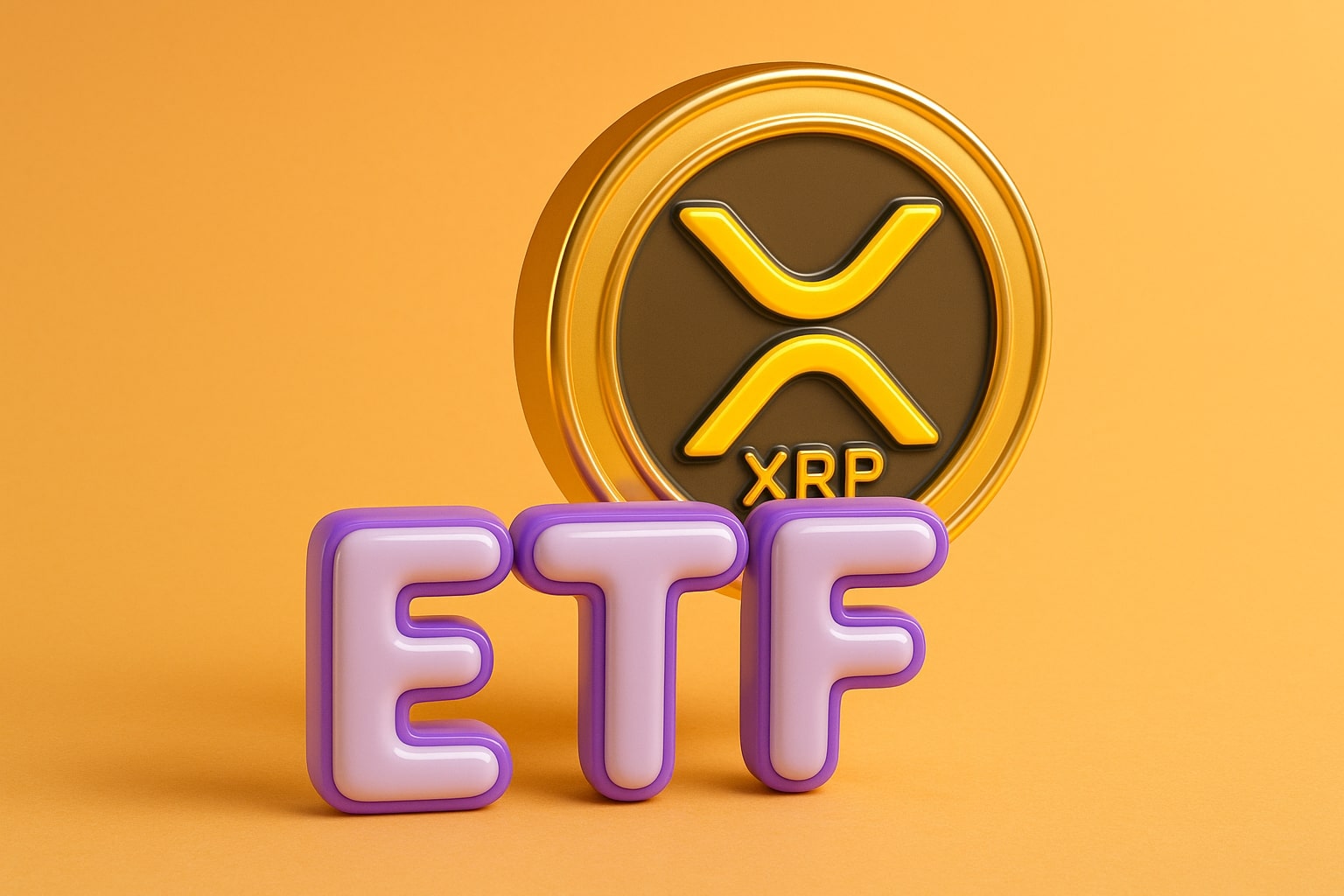
Ethereum Price Forecast - ETH-USD Steadies at $3,020 as Fusaka Upgrade Nears
ETH consolidates above $3,000 ahead of the December 3 Fusaka rollout; institutions hold 43% of ETF supply | That's TradingNEWS
Fusaka Upgrade Pushes Ethereum Toward Its Next Scaling Phase
Ethereum (ETH-USD) trades around $3,019.36 after rebounding from the $2,760 support level as the network prepares for the Fusaka upgrade scheduled for December 3. This event marks Ethereum’s most extensive Layer-1 transformation since the Pectra update earlier in 2025. Fusaka merges two major protocol improvements, known as Fulu and Osaka, targeting both the consensus and execution layers. The update will double the network’s Layer-1 gas limit from 30 million to 60 million while implementing Peer Data Availability Sampling, a process that allows nodes to verify small fragments of data instead of downloading entire blobs. This innovation enhances scalability, lowers bandwidth demands, and improves block validation speeds. Fusaka also introduces native support for the secp256r1 standard, allowing users to validate transactions through biometric tools like Apple’s FaceID and TouchID. This integration removes one of the last major barriers to mainstream user adoption. A 35-day rollout beginning in early December will progressively raise data blob limits and expand capacity across rollup ecosystems, leading to cheaper transactions and smoother execution on Layer-2 chains.
Institutional Positioning and ETF Flows Reinforce Demand
Institutional participation in Ethereum continues to strengthen ahead of the upgrade. Recent ETF data shows that approximately 43% of all circulating ETH shares are now held by major institutions, including Goldman Sachs, Millennium Management, and Jane Street. This ratio has increased steadily since the middle of the year, signaling deepening professional accumulation. Institutional investors have injected nearly $680 million in inflows over the past week, mirroring Bitcoin’s 2021 ETF accumulation phase but with greater emphasis on yield-bearing staking exposure. This trend confirms that Ethereum’s liquidity base has shifted from speculative retail traders toward long-term institutional holders anticipating performance improvements post-Fusaka.
Market Structure and Technical Landscape
The ETH-USD pair is currently consolidating within a narrow range between $2,950 and $3,080, reflecting a balance between accumulation and resistance. The $3,070–$3,080 area represents the upper supply zone where liquidity clusters align, and a clean breakout above this level could open the path toward $3,250. Below current levels, the $2,760 Fibonacci support remains the primary structural pivot. Losing this threshold would expose ETH to $2,500, while defending the $3,000 level on weekly close maintains momentum toward $3,300 and $3,500. The 200-day exponential moving average at $3,520 continues to act as the line between short-term consolidation and trend reversal. The daily relative strength index has recovered to 42.9, showing early signs of bullish traction, while the four-hour chart RSI at 64.4 suggests mild overbought conditions, pointing to a potential short-term pause before continuation.
On-Chain Metrics Confirm Supply Compression and Strength
Ethereum’s exchange reserves have dropped to just 16.8 million ETH, the lowest level in over five years. This sustained reduction in exchange balances indicates that long-term investors are moving coins into staking or cold storage rather than preparing to sell. Historical behavior around such multi-year supply lows has consistently preceded major bull cycles, including the 2021 and 2023 rallies, where similar outflows reduced available liquidity by nearly 18%. The network now holds over 28 million ETH locked in staking contracts, representing 23% of total circulating supply, with an average annualized yield of 2.6%. The steady contraction of liquid supply, combined with yield-based staking incentives, establishes a scarcity-driven foundation that amplifies upward price elasticity if post-upgrade demand increases.
Valuation Models Support a Fair Value Range of $4,700 to $8,500
Research by Hashed Analytics examined ten different valuation frameworks applied to Ethereum’s network activity and concluded that eight of them place ETH significantly below fair value. The weighted average price across all models stands at $4,766, which represents a 58% premium over the current market level. Methods that incorporate both mainnet and Layer-2 total value locked suggest an intrinsic price of $4,732, while commitment-based models factoring in staked and DeFi-locked ETH estimate $5,097. A separate Metcalfe’s Law approach valuing Ethereum as a network based on transaction connections indicates potential worth above $9,950, while traditional yield bond analogies used in traditional finance calculate a fair level near $1,940. The combined average of all frameworks reinforces a strong undervaluation signal and aligns with long-term fundamental growth as the network’s throughput, staking participation, and on-chain volume expand.
Read More
-
Meta Stock Price Forecast - META Shares Rises to $648 as AI Investment Drives Ad Growth
28.11.2025 · TradingNEWS ArchiveStocks
-
XRP Price Forecast - XRP-USD Steadies at $2.20 as XRP ETF Demand Surges and Exchange Supply Tightens
28.11.2025 · TradingNEWS ArchiveCrypto
-
Oil Price Forecast - WTI (CL=F) Recovers to $59.23 While Brent (BZ=F) Steadies at $63
28.11.2025 · TradingNEWS ArchiveCommodities
-
Stock Market Today - Wall Street Rises as Dow Jones (^DJI) Climbs to 47,730, S&P 500 (^GSPC) at 6,842, and Nasdaq (^IXIC) Rebounds After CME Outage
28.11.2025 · TradingNEWS ArchiveMarkets
-
GBP/USD Price Forecast - Pound Climbs to 1.3240 as Dollar Falls and UK Budget Strengthens Fiscal Confidence
28.11.2025 · TradingNEWS ArchiveForex
Technical Setup Points Toward $3,500 and $4,500
From a structural standpoint, Ethereum remains within a rising channel that originated at the $2,500 lows. Each successive dip has established a higher low, while volume concentration between $2,800 and $3,100 shows accumulation by long-term traders. The midline of this ascending pattern crosses near $3,200, which is the immediate trigger level for a bullish breakout. If the price can close decisively above the 200-day EMA around $3,520, the next logical upside target lies between $3,900 and $4,200, where historical supply zones from 2022 and 2024 overlap. Beyond that, Fibonacci projections identify $4,450 and $4,900 as extended resistance levels, matching the same trajectory that carried Ethereum from $1,800 to $4,950 after the Pectra upgrade earlier this year. A breakdown below $2,800 would invalidate the structure, though on-chain and volume data suggest limited downside pressure due to low exchange supply.
Historical Patterns Reinforce the Case for a December Rally
During the Pectra cycle in May 2025, Ethereum surged 22% in one day, climbing from $1,800 to $2,200 and reaching an all-time high of $4,950 within three months. Analysts now note that the pre-Fusaka market conditions are nearly identical: tight volatility, rising institutional flows, and suppressed retail leverage. According to market strategist Ted Pillows, if Fusaka mirrors Pectra’s magnitude, ETH-USD could rally approximately 50% and test $5,500 before the end of December. The ETH/BTC cross has already reversed its bearish structure and now exhibits relative strength, signaling that Ethereum is beginning to outperform Bitcoin again as liquidity rotates back into smart contract platforms.
Network Efficiency and Ecosystem Momentum
The Fusaka implementation will dramatically reduce transaction costs across Layer-2 environments, with analysts estimating fee declines between 60% and 90% by January 2026. The average transaction cost could fall below one cent, opening the door for mainstream use cases that were previously uneconomical. This will empower gamified ecosystems, DeFi microtransactions, and emerging consumer-facing protocols. One example of a project positioned to benefit from this environment is Pepenode (PEPENODE), a mine-to-earn platform built on Ethereum that burns 70% of in-game token spending, introducing deflationary mechanics similar to Ethereum’s EIP-1559. These use cases illustrate how Ethereum’s throughput improvements translate directly into a broader commercial network effect.
Macro Context and Market Correlation
Ethereum’s correlation with Bitcoin has fallen to 0.71 from 0.94 earlier this year, demonstrating growing independence in price discovery. The total cryptocurrency market capitalization stands near $3.25 trillion, with Ethereum representing roughly 17% of the total. Unlike the 2021 cycle, where leverage dominated, today’s environment is characterized by lower systemic risk and higher institutional ownership, setting a more stable foundation for long-term growth.
TradingNews.com Verdict
Ethereum (ETH-USD) holds firm above $3,000 as the network enters a critical stage of its technological evolution. The combination of record-low exchange balances, a 43% institutional ETF footprint, and multiple valuation frameworks pointing toward $4,700–$8,500 supports a bullish interpretation. The market structure above $3,000 is constructive, and confirmation above $3,080 would pave the way to $3,500 and beyond. With Fusaka driving scalability, lower transaction costs, and renewed retail access, Ethereum is positioned to reclaim leadership in digital assets through early 2026.
Verdict: BUY — accumulation zone $2,800–$3,100; medium-term target $4,700; long-term range $8,500 as Fusaka accelerates adoption and reduces Layer-2 friction.


















